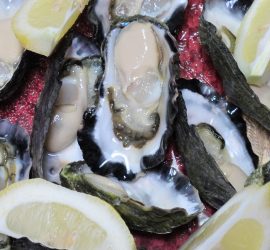Western Australia is absolutely massive. At over a million square miles, it takes up a third of the Australian continent. It is five times the size of Texas and has cattle stations bigger than England. Over eight thousand miles of sparkling Indian Ocean frill its mantle, much of it pristine and unexplored. There are world famous surf beaches, tropical reefs, limestone cliffs, mangrove estuaries, and beautiful island atolls with little environmental pressure from fishing or tourism. The seafood is spectacular, with species that do not exist anywhere else such as the world’s most delicious crayfish and Australia’s tastiest fish. There is an amazing diversity of marine systems that accommodates all of Australia’s top-shelf seafood, including pink snapper, King George whiting, coral trout, barramundi, southern bluefin tuna, abalone, blue swimmer and mud crabs. It is the rock lobster capital of the world, with a strong and well-managed commercial fishery and a very active recreational fishery. Rich in natural resources, much of the economy is driven by mining, but WA also has large wheat, wool, lamb and beef industries, and exports a lot of seafood. Western Australia’s hugely successful wine industry is located in the south-west of the state, a region renowned for its Shiraz, Sauvignon Blanc, Chardonnay, and especially for its Cabernet-based wines.
Traditional Australian cooking is very British. However, much has changed in Australia over the past half century or so due to the large increase in migration, especially migration from Europe and Asia. Today over 23% of Australians were born overseas, and 26% of those born in Australia have at least one parent who was born overseas. In the major centres of WA such as Perth, Fremantle or Broome, the influence of Italians, Greeks, Chinese, Vietnamese and Thais is immediately apparent in menus, markets and supermarkets. Modern Australian cooking is a fusion of British traditions with European style and Asian ingredients….
With the favorable climate, Australians are masters of the barbeque…..
Over 80% of Australians live on the coast, and of these, it is the Western Australians who understand their coastline and their seafood best. ‘Sandgropers’, as they are known to other Australians, all have their favorite piece of pristine, unpopulated coastal paradise, and all of them are completely at home camping, cooking and eating outdoors. WA boasts the highest per capita rate of boat ownership in the world, and recreational fishing is common throughout the state, involving around 34% of the population regularly. Western Australians have traditionally caught and cooked a far wider range of seafood than other Australians. Unlike other Australians, they actively pursue shellfish and crustaceans for the table, enjoying fresh abalone, marron, lobsters, prawns and crabs.
Most of this grand state is desert, and some of the biggest deserts in the world occur in WA. The Great Sandy Desert in the north, the Gibson Desert in the centre, and the Great Victoria Desert and Nullarbor Plain in the south make up a considerable proportion of the state. Although vast and harsh most of the time, the deserts and surrounding areas explode in color each spring with spectacular displays of wildflowers. The climate is usually hot and dry in the centre, but it varies widely along the coast from tropical and monsoonal in the northern coastal regions, to Mediterranean and temperate in the south. There are rainforests in the far northern Kimberley and in the far southern Margaret River regions. The major currents of different oceans influence coastal climate patterns, dispersing marine larvae from cool southern oceans and warm tropical oceans variously along the coastline. These currents colonize all manner of species thousands of miles from their natural ranges and create a tremendous mosaic of marine diversity. WA has by far the world’s most southerly coral reef systems as a result of the strong Leeuwin Current that flows way down the WA coast from the north.
See here for Western Australia Adventures


